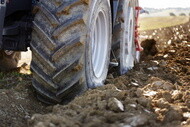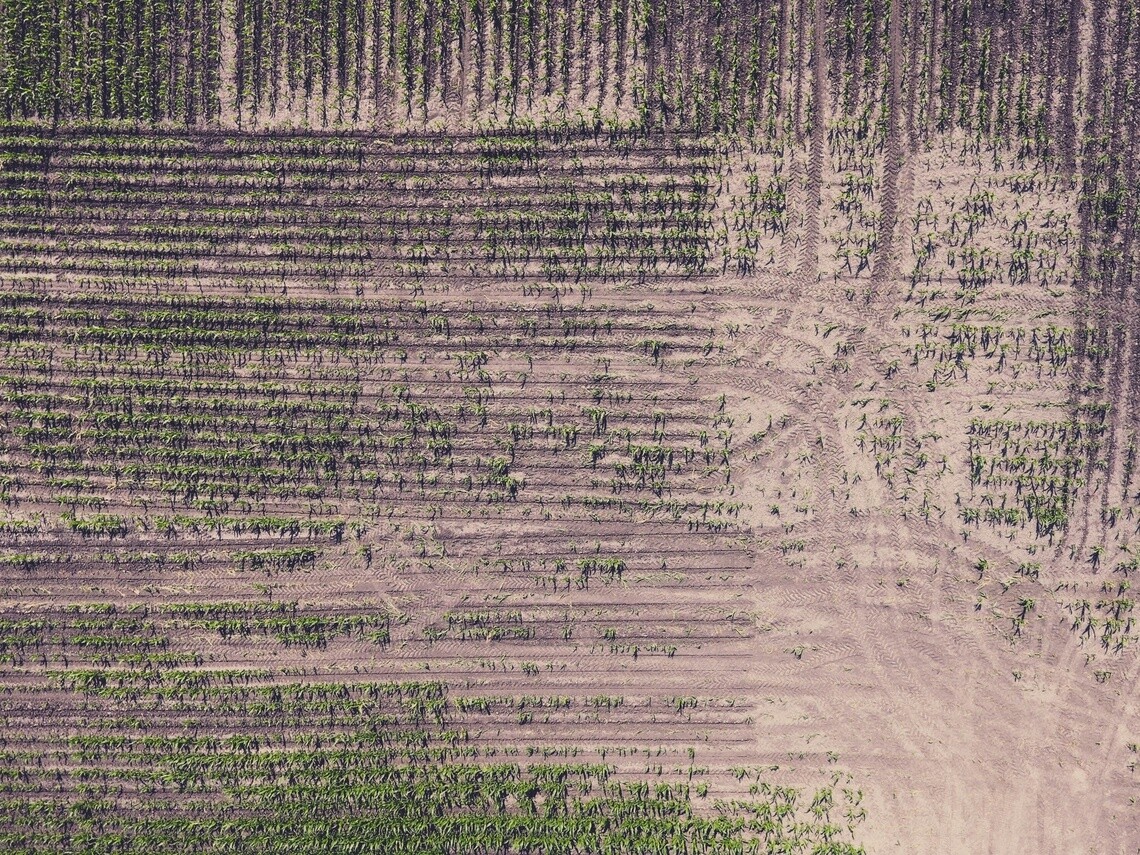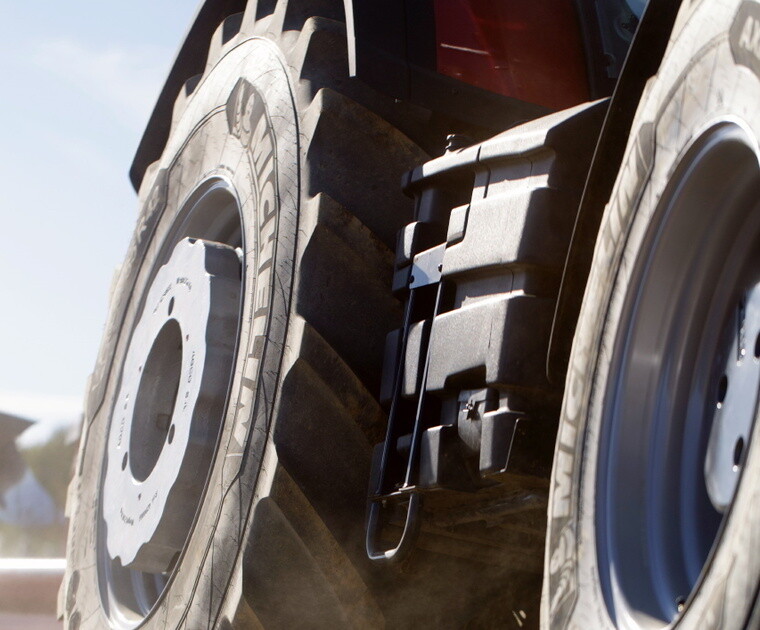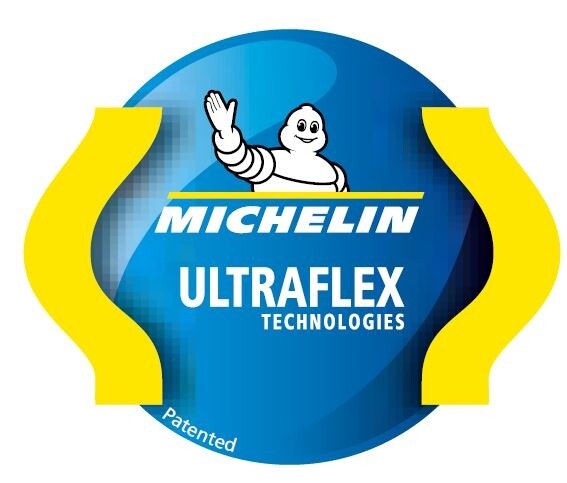
Background axiobib2 at work Help and Advice
sculpture pneu MICHELIN AXIOBIB2
Reducing soil compaction
Tyres are in direct contact with the soil, so they have a crucial impact on compaction and rut formation.
What is soil compaction?
Soil compaction is one of the principal soil damage processes: it is caused when increasingly heavy agricultural machinery travels over the soil, often in difficult weather conditions. Compaction is linked to the very nature of the soil, its water content, crop types and the load applied to the surface. Repeated passes by agricultural equipment create soil compaction and shear, thereby reducing capacity for aeration, infiltration, and crop root penetration. The economic impact of soil compaction is significant: reduced crop yield, the risk of disease development, and a need to do regeneration work such as ploughing and/or de-compaction which eat up considerable fuel and time.

Edito photo soilcompaction Help and Advice
soil with tire tracks

A rut is a longways indentation in the soil
picture of a rut in a field
What is rut formation?
A rut is a longways indentation in the soil that is caused by farm machines to sinking down into it when they pass over. Rut formation is a major issue on muddy ground.
Rut formation has catastrophic consequences for crop growth: nothing grows in a rut, so it represents a net loss of yield.
Ruts encourage water stagnation, which can asphyxiate plants and promote the development of disease.
Ruts also cause farm machines to consume more energy. The depth of a rut is similar to a "step" that an agricultural tyre has to climb constantly. That means increased fuel consumption. The field damage caused by substantial rut formation will need to be repaired. This means carrying out soil regeneration work, which uses up time and fuel.
A tyre in direct contact with the ground offers a solution that helps limit soil compaction and rut formation. An agricultural tyre can deliver this solution if it enables you to carry very heavy loads at very low pressures. The pressure in the tyre is close to the average pressure applied to the soil. (E.g. if the pressure in the tyre is 1 bar (14.5 psi), the pressure applied to the soil by the tyre will be around 1 lb/sq.in or 1 kg/cm2.) So the higher the tyre pressure, the higher the pressure applied to the soil and the higher the degree of compaction and rut formation. Soil compaction is made worse when agricultural tyres slip – to avoid this it is essential they have good traction!
Michelin's advice
Michelin develops agricultural tyres that help reduce soil compaction significantly and improve the traction capability of farm vehicles.
Recommendation 1: Opt for wide, "large volume" tyres
Tyre width has an impact on soil compaction! The purpose of wide and large volume tyres is to reduce pressure at the same load and provide a better level of traction, while retaining the same external diameter and rolling circumference as a "standard" tyre. A tractor originally fitted with standard tyres can be fitted with wide or large volume tyres. Michelin has developed ranges of wide and large volume series:
- MICHELIN OMNIBIB 620/70 R42 160D TL and 480/70 R30 141D TL.
- MICHELIN MULTIBIB 650/65 R42 158D TL and 540/65 R30 143D TL.
- MICHELIN MACHXBIB 650/75 R38 169 A8 /169B TL and 600/65 R28 154A8/154B TL.
Take the example of a 200 hp tractor with a load of 1800 kgs per tyre at the front and 4000 kgs per tyre at the rear, and a maximum speed of 50 kph on the road. Original equipment:

Edito 5 picture axiobib2 0081 at work 6 Help and Advice
Pneu Michelin axiobib 2 en action
Recommendation 2: Opt for Michelin UltraFlex Technologies
With MICHELIN UltraFlex technology, improving crop yields starts with your tyres. What is the secret? An innovative, particularly tough casing, which enables more flex. As a result, MICHELIN UltraFlex tyres can carry heavy loads even at very low pressures, however fast you work. And that's not all: the flexible construction of the casing allows for a larger footprint, which in turn increases the tyre's traction. So:
• you save time and fuel
• you protect your soil
• you increase your crop yields
For at se videoen skal du acceptere visse cookies fra Youtube-platformen. Klik på knappen herunder for at åbne cookie-modulet.
Acceptér Youtube-cookies
Logo ultraflex Tyre
All the inflation charts you need for your farm vehicles, range by range, are free to download here.
Other help and advice pages that might interest you:
• Reading and understanding tyre markings
• Why and how should you ballast your tyres to get the most out of them?
• How do you fit and remove tyres?
• How do you find the right references for rims, tubes and valves?
• How do you store tyres safely?
• Road vehicle regulations




